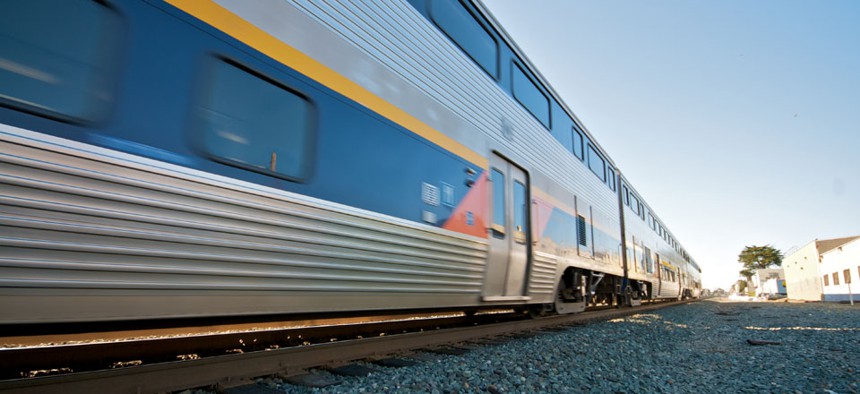The Billion-Dollar Technology That May or May Not Prevent the Next Big Train Crash

chuckstock/Shutterstock.com
Positive Train Control is coming to a railroad near you — but perhaps not as soon as the government wants.
Emerging reports on the two recent train crashes in Europe suggest, ever so sadly, that they could have been avoided. In Spain, the engineer appears to have been talking on the phone and looking at documents while speeding. In Switzerland, one driver seems to have failed to stop at a signal and let another train pass, leading to their collision. Human errors are human nature, but these particular mistakes carried tragic consequences.
In the aftermath of a major train crash, let alone a pair in close succession, it's imperative to remember that train accidents are exceedingly rare. That's more or less true around the world, Yonah Freemark reminds us at CNN.com, with high-speed rail in particular performing incredibly well. Writing here earlier this week, Emily Badger pointed out that Americans are less likely to die in a train crash than in a boating accident.
Of course the sad exceptions are what stick most in our collective minds. Perhaps the worst during this period was the September 2008 collision in Los Angeles between a Metrolink commuter train and a freight train that killed 25 people and injured more than a hundred. That accident was the result of human error, too, with startling similarities to what occurred recently in Europe: an engineer who was texting at the controls and, likely as a result, missed a stop signal.
If there's anything good about these incidents it's that they often spark a conversation about safety that's easy to defer in brighter times. Less than a month after the Metrolink crash, Congress adopted the Rail Safety Improvement Act of 2008. The law's biggest measure was the mandatory implementation by intercity and commuter trains (as well as some large freight lines) of a billion-dollar technology called "positive train control."
The promise of PTC, according to the legislation, was to eliminate precisely the types of human errors responsible for the Metrolink and similar crashes: "train-to-train collisions, over-speed derailments, incursions into established work zone limits, and the movement of a train through a switch left in the wrong position."
Read more at The Atlantic Cities.
(Image via chuckstock/Shutterstock.com)
NEXT STORY: Look Who’s Monitoring Social Media Now





